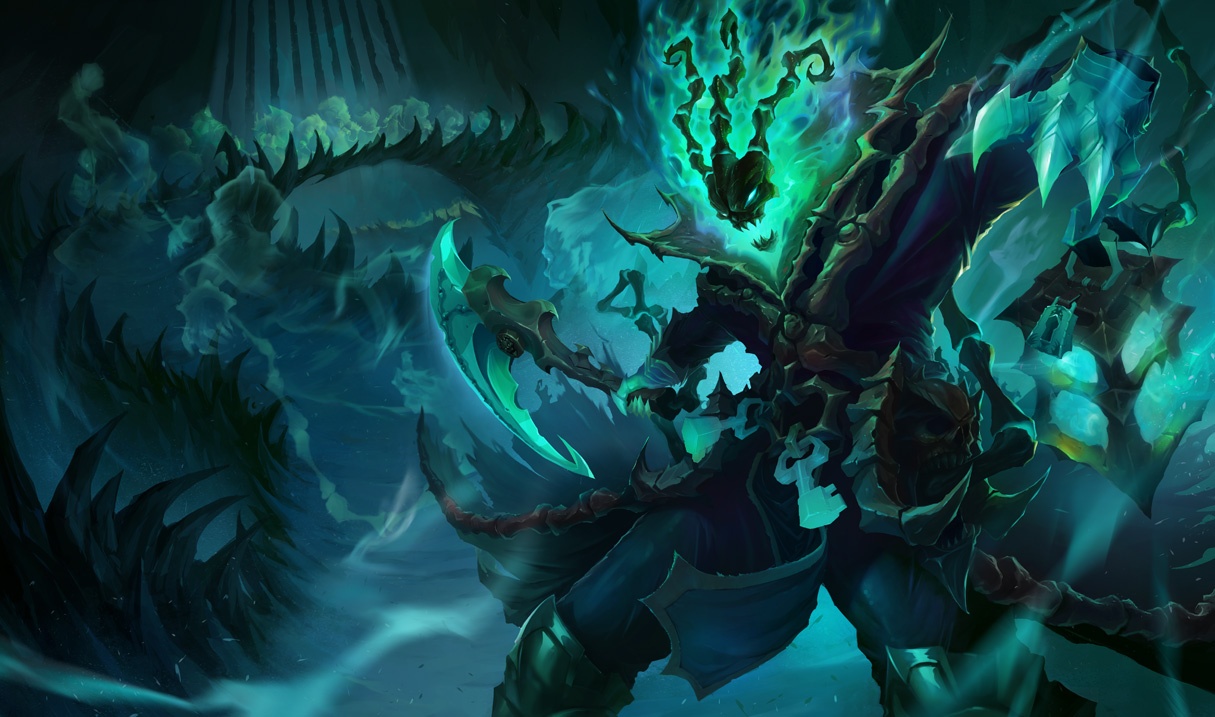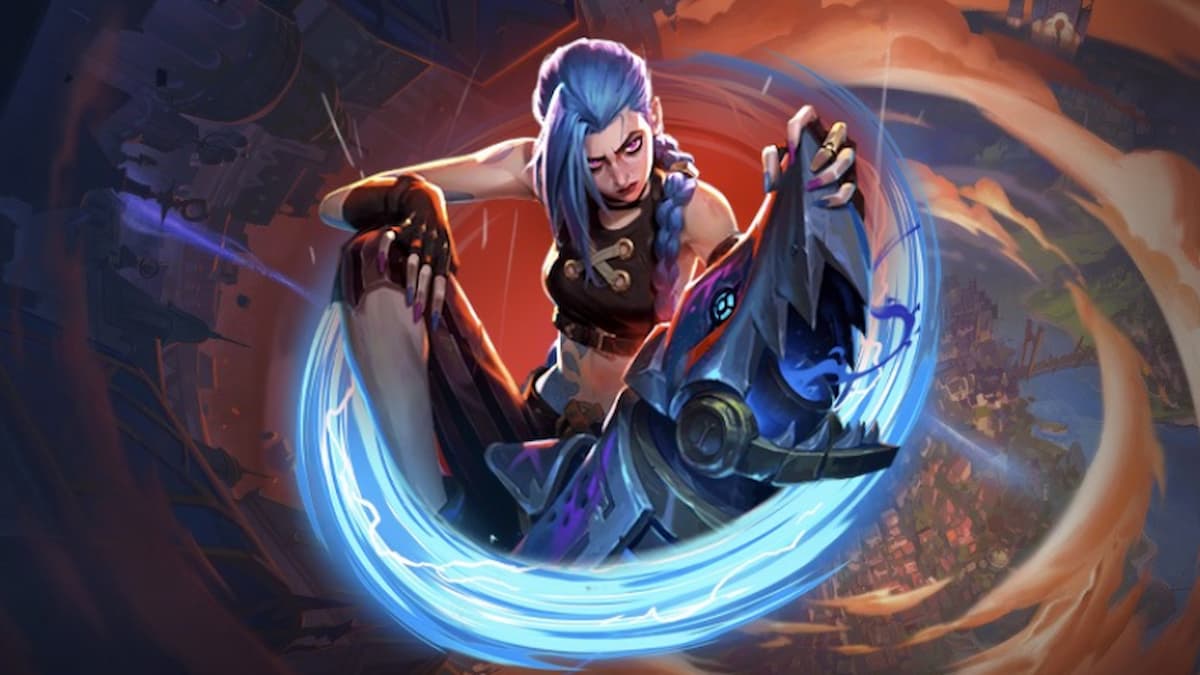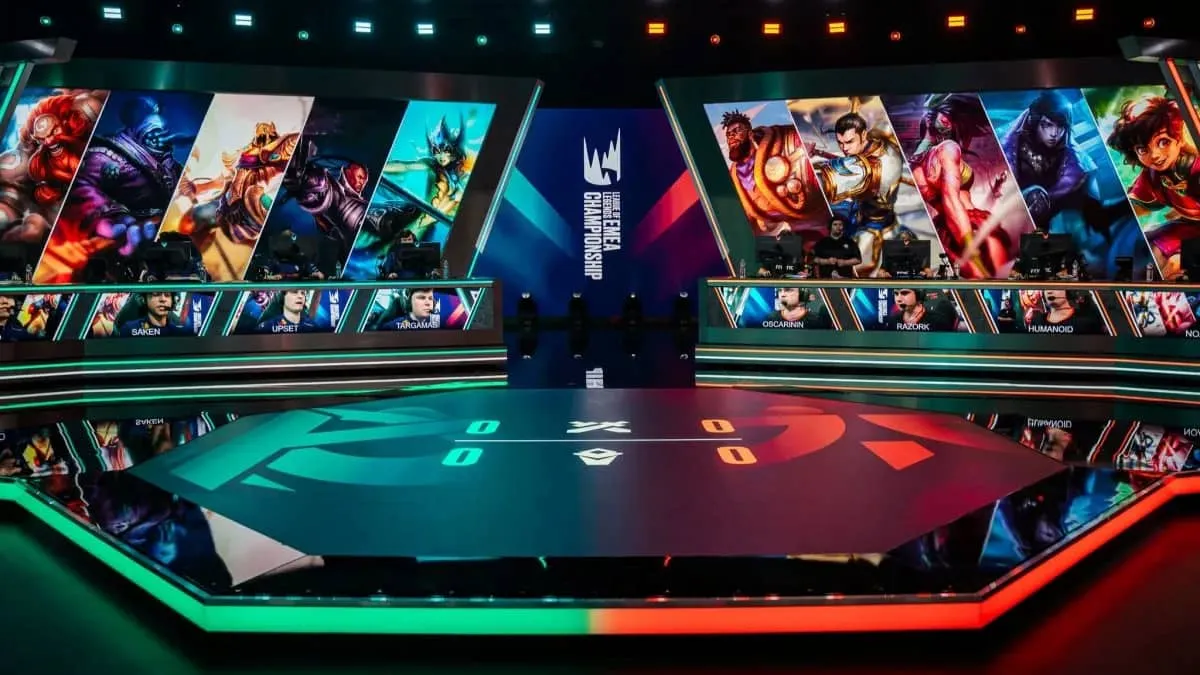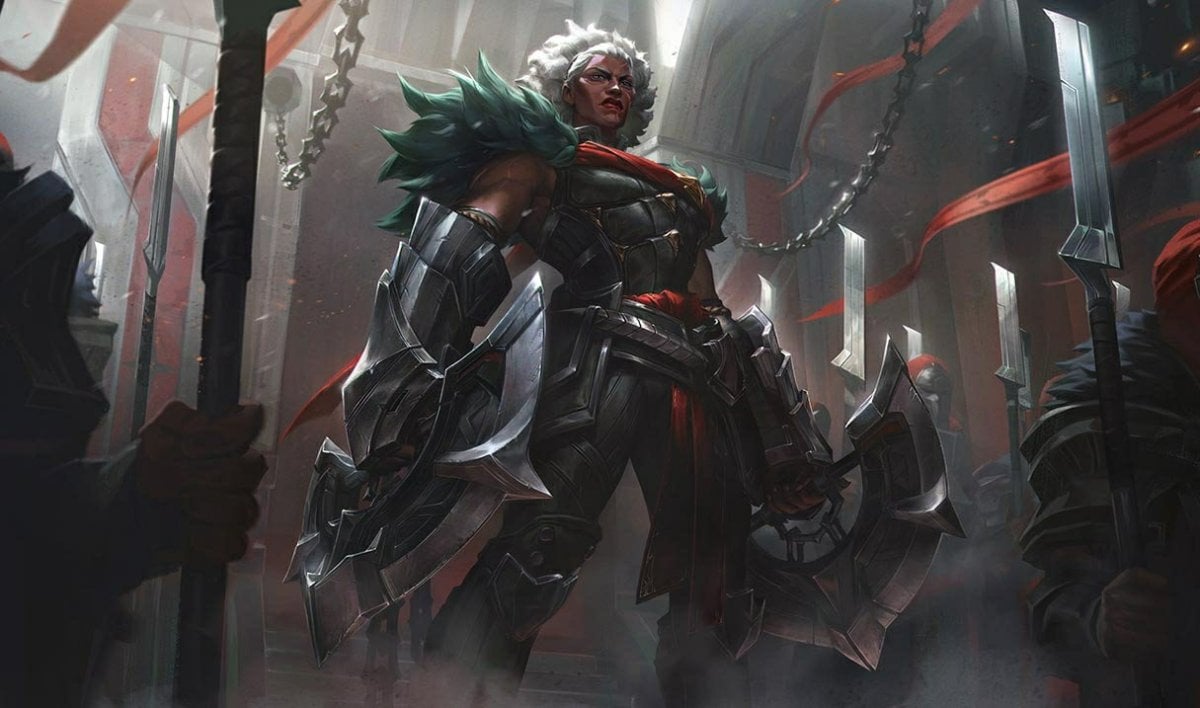My goal with this series is to establish historical context by exploring who I think are the best players to ever play those champions. This series will give an in-depth history of a champion’s competitive history and showcase some of the best Summoners to ever call them forward.
For this installment, I’m going to try and go for a different angle. Normally, I go through a chronological history of the champion’s play. For Thresh, he’s been so popular that he has almost always remained at the top, so rather than repeating over and over again how strong he’s always been, I’m going to highlight some of the best Thresh players and describe what made their play unique. Please give me feedback on this changed style, if it works well I might stick to it!
Previous installments of My Trusted Friend: Lulu, Zed, Urgot

Thresh is a twisted reaper whose hungry chains ensnare the souls of the living.
Meta shifts are one of the most important aspects of competitive League of Legends. While signature champions exist, the true greats are only able to rise to the top through extensive mastery of multiple champions. Over the course of competitive play, only a single champion has managed to always stay at the top. Champions like Orianna and Lee Sin are infamous for consistently staying in the meta, but even they have fallen out of favor for several months at a time. (Incidentally, both champions are currently seeing a slump in top-tier play.) In spite of constant nerfs, Thresh has stayed a top-tier support ever since his creation in late Season 2. For the last 3 years, mastering Thresh has become a basic just to be considered a top-performing support player.
As soon as Thresh was released, players realized how powerful he would be. Even before the champion was even released, CLG’s aphromoo already claimed that he was a Thresh main. As time went on, players realized more and more about the versatility of the champion. Some of his most notable combos remain in the game – the ability to fake a gank with his lantern remains one of Thresh’s most devious tricks. Some of his combos have been removed, coL support MeyeA was famous for using Flash to remove his hook’s wind-up animation, an unpredictable combo that was eventually removed.
What separates Thresh from every other champion is his incredible versatility. While some champions like Sona or Annie have rather binary play patterns, all supports, both offensive and defensive, are able to play their styles on Thresh. Because of how prolific he has been in competitive play, nearly every great support was a Thresh master who approached the Chain Warden in their own unique way. For the all-time legends, watching their Thresh play was like seeing an artist’s signature.
A moment’s hesitation at the sight of his ghostly visage and their is no escape. He leaves in his wake hollow corpses, their souls ripped loose and trapped in the sickly green light of his lantern.

Today, one of the most powerful aspects of Thresh’s gameplay is his ability to pick off opponents. Not only is his hook (and the subsequent Flay he can add on) one of the most versatile CC moves in the game, his Lantern allows him to bring in additional crowd control of damage, turning him into a one-man pick machine. At the height of the pick meta in Season 3, when assassins were able to zero-out gold-starved supports in the matter of seconds, two star supports rose to the top of their regions with a style centered scoring picks. Although these two supports no longer play at the professional level, PoohManDu and LoveLing revolutionized Thresh play during Season 3.
When LoveLing first rose to prominence, China was dominated by the stalling game play of Team WE. OMG was able to shatter the metagame with their aggressive “Freight Train” composition, consisting of strong early-mid game champions that could hunt down opponents and deal damage past walls. Against the classic OMG lineup of Hecarim, Graves, and Thresh, OMG’s opponents simply stood no chance and eventually turned to copying their aggressive strategies when they realized that they couldn’t counter it. His Hook and Flay mechanics were only decent. Although LoveLing would occasionally go on extreme hot streaks, such as during his brief return to support at the All-Star tournament, what separated LoveLing was his usage of Thresh’s lantern. LoveLing abused Thresh’s lantern as an offensive tool to the maximum possible level, pulling in additional high damage champions to snowball the mid game over and over again. His creative usage of Thresh led many to call him “China’s MadLife” but he would eventually leave the support position to move into the jungle, where he would star for global audiences at Season 3 Worlds.
PoohManDu, now coaching in China, was one of the most important members of Season 3-4’s legendary SK Telecom. His harsh decline after his medical leave may leave a sour taste in fan’s mouths, but he was indisputably a top 3 support in the World during his prime, even before SKT began winning tournaments. Whereas LoveLing’s focus was in skirmishes and burst situations, PoohManDu’s pick style is more similar to how we conceptualize Thresh today. Although he was a mediocre laner, his ability to score picks and snowball Faker were critical to SKT’s success. His great hook and flay mechanics were fantastic, but one of the most interesting things about Pooh’s play was his approach to Thresh. Although teams today think of Thresh as a tank, Pooh played him much more like a mage, staying further back and focusing on peel/safety during teamfights, a style that fit well with the gold-starved support meta of Season 3.
Thresh carves careful deliberate paths through Valoran. He handpicks his targets individually, devoting his full attention to each soul in turn.

A MadLife is a predicted hook on Blitzcrank or Thresh that hits an opponent at the spot they flashed to. When MadLife played at Season 2 Worlds, he developed a mystique that no player has since rivaled. Even his peers whispered that MadLife had hacked his own League client to practice shooting skillshots through minions or that his room was covered with equations calculating Blitzcrank’s move speed. In spite of his infamous mastery of Blitzcrank and Alistar, MadLife is arguably even more famous for his calculated Thresh hooks. In addition to predicting Flashes, Madlife was brilliant at shooting his hook through minions or through the fog of war to pick off opponents right when they thought they were safest. MadLife was also far from a one-trick pony. He was one the first players to begin cancelling escapes with Flay or baiting out jungle ganks with his Lantern. His overall mastery of Thresh has made him synonymous with the Chain Warden. A quick glance at MadLife’s Thresh play was enough to convince even the staunchest atheist that the rumors about MadLife were true.
Not only was MadLife a great Thresh player, he, like almost every other player on this list, was simply a fantastic support player. He was one of the first players to keep track of ultimate and Summoner Spell timings, he would often score the perfect engage for CJ Frost right before the other team’s critical spells came up. This was the perfect complement to a Thresh style that often also served as his team’s primary engage even though MadLife’s Thresh often only held a Sightstone, Mobility Boots, and perhaps a single health item due to the low gold income of supports during his prime.
He isolates and toys with them, gradually eroding their sanity with his twisted, maddening humor.

Coincidentally, while his CJ Frost brother MadLife played a fiery playmaking style of Thresh, CJ Blaze support Lustboy preferred an icy defensive style, stopping his opponents advances over and over again both in the laning phase and during teamfights. Lustboy is most famous for his play on Lulu, a traditionally defensive champion that he was able to reach new heights on by mixing in aspects of offensive play. Throughout Lustboy’s career, he has usually been matched with weak laning AD Carries who make their money through great teamfighting. In Thresh, Lustboy saw a champion very similar to Lulu, a versatile champion who could protect his teammates until it was time to strike. By using Thresh’s hook, flay, and even box to keep opponents off of his teammates during the laning phase, Lustboy was able to help his AD’s reach their full potential and endlessly frustrate his opponents. It’s important to note that while Lustboy generally wasn’t as much of a playmaker on Thresh as MadLife, his mechanics were nearly as great, and when he finally decided to go on the offensive, he was almost was able to either secure kills or blow critical summoners. Near the end of his time on CJ Blaze, Lustboy was probably the team’s second best player after top laner Flame.
Samsung Blue support Heart also took a more peel oriented approach to the Chain Warden, but did so in a drastically different fashion. Heart was never the star of Samsung Blue or a naturally mechanically strong player (Mata mentioned that Heart would sometimes practice over 20 hours a day to keep his level high.) Heart had a very mediocre laning phase, but he was a great roamer and supportive player. Heart took an unusual approach to Thresh where he would walk up as close as possible before casting his skillshots, therefore minimizing the risk of a failed play. (Lemonnation of C9 also takes this conservative approach.) Later on in games, he would usually would focus on peeling for his star carries Deft and dade. In spite of Heart’s mediocre mechanics, he played a critical workhorse role on one of the best teams of all-time through his determination and unique approach.
Once Thresh takes an interest in a soul, he does not relent until he possesses it. This is his only purpose.

Nicknames say a lot about a player. In sports, nicknames are earned through consistent brilliance, and e-sports is no different. Nicknames say even more about a player when fans rush to supplement an already brilliant nickname (The Support Carry) with an even better one (The Thresh Prince.)
In stark contrast to the intellectual approach of contemporary Madlife, Edward took an aggressive, almost animalistic, approach to Thresh that made it seem like he was role-playing the character while playing in the server. When he hit a Death Sentence, he fully intended it to be a death sentence – he would kill his opponents or die trying. His propensity to repeatedly all-in on Thresh, especially with his beloved Ignite, made him a terrifying opponent. He would back up his aggression with outstanding and somewhat unique mechanics – while most Thresh players are distinguished by their brilliant usage of Thresh’s hook or lantern, Edward’s best Thresh move was The Box. His use of Thresh as a diving support in Gambit’s classic all-in compositions provided critical extra crowd control and he had a knack for clipping opponents with the walls right as they thought they were safe. (Nerfs have since made this even more difficult.)
One of the scariest aspects of Edward’s Thresh play was his propensity to “heat up” on the champion. While his normal hook/flay usage was already quite good, if Edward hit some particularly difficult hooks or made clutch cancels with flay, he would begin playing even more aggressively, leading to even more improbable plays. When Edward was playing at his highest level, it was he had summoned Thresh himself into the gaming booth to drag his opponents down to hell.
For sections on mithy, aphromoo, Xpecial, Mata, Gorilla, BunnyFuFuu, Hylissang, and Fixer, check page 2.
Little is known about the Chain Warden’s past, and many of the details live only in nursery rhymes and campfire tales.

Thanks to his unfortunate inability to qualify for the LCS during Season 4 and his subsequent year-long ban for toxicity, former Lemondogs star mithy’s interrupted career and individual gameplay has been shrouded by mystery. Taking his career as a whole, mithy obviously doesn’t hold a candle to any of the established names on this list, but when highlighting his peak in Season 3, mithy can rival the best of the best. (He still possesses the highest regular season win rate in EU LCS history.) What distinguished mithy’s gameplay was his mastery of the laning phase. While other players became specialists in Thresh’s skills, mithy had a great understanding of how to use his auto-attacks to successfully trade and harass his opponents. He sometimes struggled to make picks or successfully roam, but his use of hook in the laning phase was similarly spectacular. He had a great understanding of how to turn teamfights and apply his crowd control at the perfect times to bait his opponents into losing trades and all-ins. During his time on Origen, mithy hasn’t shown the great Thresh play he was once known for, but is rapidly improving. If mithy can get over his choking issues and return to the LCS, he will have an exciting chance to build on a promising Thresh legend.
Another fantastic lane-oriented Thresh player was already Thresh main in Season 3, but only found greatness in later seasons. While mithy’s career is filled with question marks about what could have been, aphromoo has built up a solid individual resume as one of the best Western supports ever. When aphromoo first began playing Thresh, his gameplay was distinguished by solid synergy with Doublelift and a respectable laning phase but it looked like his hooks and flays were plagued by the same LAN jitters that had hampered his AD Carry career. It was only during his second stint with CLG that aphromoo unlocked his potential on Thresh. Today, aphromoo is famous for his all-in potential in the laning phase and his role as the primary playmaking and engager on CLG. In addition to his great mechanics which enable these plays, he has a great understanding of when and how to win engagements for his team, from small skirmishes to large scale teamfights. Over the last two seasons, his team has been rightfully criticized for their poor playoff performances, but there is little doubt that while aphromoo has became one of the most notable supports and Thresh players in the world.
Patient and brutal, he used a variety of methods to break his victims’ minds before their bodies succumbed to his grisly designs.

While the previous players all specialized in certain specific aspects of Thresh and took them to the next level, other support players used the Chain Warden as a platform to demonstrate their all-around mastery of the support position. To discuss the Thresh play of these players is simply to discuss their support play as a whole. Two particular stars stand as the greatest Thresh players of their region’s history – Mata in Korea and Xpecial in NA. With the playoffs rolling around, both players could easily put themselves in the discussion for the best support in their region after two disappointingly mediocre (for them) regular seasons.
Mata is simply the best support of all-time. Most famous for his vision control and shotcalling, these aspects are only the tip of the iceberg when discussing Mata’s gameplay. His laning phase was famously spectacular, especially because of his almost supernatural synergy with support player imp. His playmaking was arguably even better than his laning. Samsung White was a team very much reliant on snowballing early-mid game advantages, and Mata’s ability to both find picks and engage teamfights meant that White could often beat their opponents into submission before the 25-minute mark. In a pinch, Mata also excelled at peeling for imp, the team’s back-up style when games dragged out too long. Although Mata had an incredible champion pool, the versatile Thresh was his best champion. The most amazing thing about his Thresh was that it simply had no particularly weak features. Every single aspect of Mata’s Thresh play was extremely notable and an example for supports all around the world.
Perhaps the most experienced support player in the game today, having played since before Season 1, TSM’s Xpecial is famous for his versatile gameplay. In Season 2, before Thresh even came into the game, Xpecial and then bot lane partner Chaox were already known for copying opponent runes and masteries to great success, even in clutch tournament situations when playing the characters for the first time. On Thresh, Xpecial quickly picked up the nuances of the champion and adapted accordingly. What was unique about Xpecial’s approach to Thresh was how his gameplay would change as the seasons went on to fit the most popular and successful way to play Thresh at the time. Xpecial’s laning phase has always been extremely reliable, and his Thresh was no different – Xpecial has consistently scored an unusual amount of laning phase kills on the champion since its release. What changed was what happened outside of the lane. During Season 3, Xpecial was a peeling virtuoso (his plays against Saintvicious is one of the most widely circulated LoL clips), but eventually adapted to making clutch pick plays over the course of the summer season, peaking at the World Championships where he and WildTurtle looked like one of the best pairings in the world. In Season 4, Xpecial gamely adjusted to the updated gold amounts for supports as others struggled, and turned his Thresh and Annie into one of TSM’s primary engagers before leaving to join Team Liquid. Unlike players like Edward or Loveling who would heat up on Thresh in game, Xpecial had a weird quality where he would simply go into game and begin hitting every single hook/flay perfectly. When Xpecial was having an on-game, the other 9 players would quickly find out. His tendency to have these perfect games in the play-offs is a big part of why he is one of the clutchest players of all time.
One last threatening Thresh player is current GE Tigers (and former NaJin White Shield) support GorillA. Much like Mata and Xpecial, GorillA’s Thresh is an all-around dominant pick with a strong laning phase and great play-making potential. Initially partnered with weak bot laner Zefa, GorillA frequently found himself harassing for two, using his spells to keep Zefa safe while trading with Thresh’s empowered auto-attack. GorillA’s consistent playmaking on Thresh was particularly important for a NaJin Shield team that struggled to find good engages due to the unreliable play of jungler Watch. White Shield was famous for constantly winning blind pick games when they scored their signature champions. While Save’s Shyvana and Ggoong’s LeBlanc were some of the more notable picks, GorillA’s Thresh was quieter but nearly as important. Although his discovery of Janna has since put his Thresh on the backburner since around the time of the Korean regionals, his Thresh remains his second most-picked champion heading into the OGN playoffs, and a deadly threat his opponents must account for.
As an interesting sidenote, the current consensus best support in Europe, YellowStaR, has only occasionally been the prolific Thresh player his status as an elite support would suggest. While he is a very solid Thresh and enjoyed a particularly great Thresh season in the summer split of Season 4, finishing with an 8-3 record, he has generally had his best performances on other supports, like Janna or Morgana. Another top support who preferred to turned towards personal picks instead of Thresh was Dignitas support Patoy during Season 3. Rather than playing Thresh, he would spam unique picks like Alistar and Fiddlesticks, only turning to Thresh as his back-up choice.
Only when he has broken the wills of Valoran’s most resilient warriors will he finally have what he needs.

As mentioned earlier, it’s a requirement for star supports to first become Thresh gods. Some young up-and-coming players who are surprising fans with their master of the Chain Warden include NA’s BunnyFuFuu, EU’s Hylissang, and Korea’s Fixer. While these players obviously have the mechanical talents to make fantastic Thresh plays, they need to work on their overall support play, notably vision control and champion pools, to challenge for the throne and become legends in their own right. (A wide champion pool is critical to becoming a Thresh legend, it’s hard to become a legend on a champion if it just gets banned out every single game.) These players have already taken the first step, and they are coming hard and fast for the old guard. With half the season still ahead of them, and possible immediate play-offs matchups against the old guard of legendary Thresh players coming soon, it’ll be exciting to see what happens next for the rising crop of talent. With kills against notable opponents, these players will have taken the next step to becoming legends in their own right.






Published: Apr 5, 2015 02:49 am